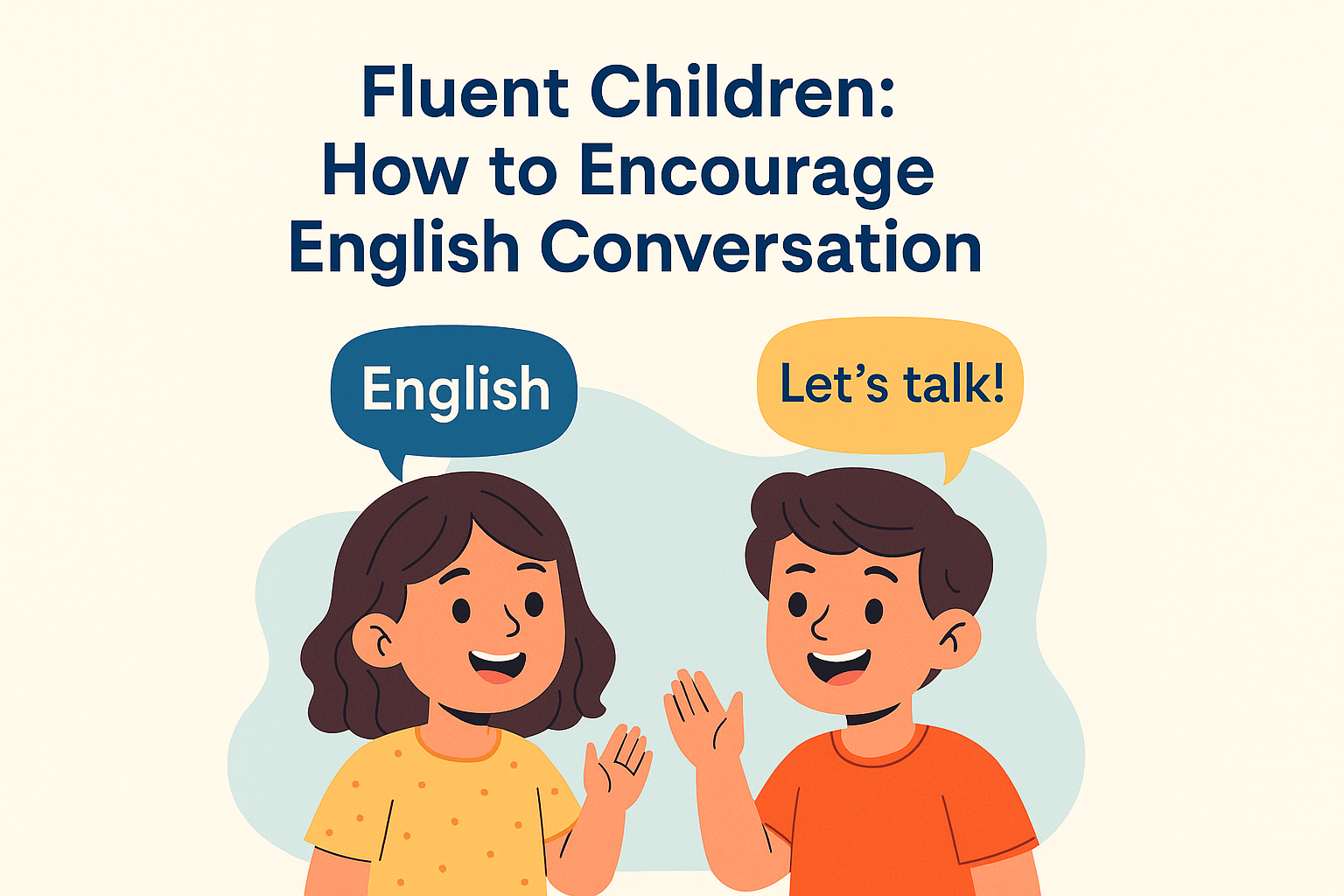Here’s how to encourage English conversation in children and why it makes all the difference in making them fluent and confident.
Currently, the world is more interconnected than ever due to globalization, and this is transforming everything around us. Mastering English from an early age opens doors to academic, professional, and cultural opportunities.
However, to become truly fluent, children must do more than focus on grammar and vocabulary—the secret lies in speaking English and encouraging constant, natural practice.
In this article, we’ll explore why it’s essential to encourage children to speak English, the most effective methodologies and techniques that can be used daily, and how FluencyFlow can help monitor progress fairly and reliably.
Why English Conversation Matters for Children
Fluency isn’t just about knowing words; it’s also about using them effectively. For children who learn through curiosity and interaction, speaking is as important as understanding. Engaging in English conversations early helps internalize language structures, encourages spontaneous language use, and reduces shyness.
More than memorization, kids need real interaction. Conversation activates the brain as a whole, boosting memory, creativity, and even empathy as children learn to listen and respond to others.
The goal is to make English a natural part of a child’s life—not just another school subject.
Teaching Methods That Put Conversation First
When teaching English to children, playfulness, movement, and emotional connection are not extras—they are core elements. These elements create a safe and motivating environment where kids feel free to speak.
Communicative Approach
The communicative approach views language as a means of sharing ideas and emotions. It focuses on real interaction—using English to tell stories, ask for help, give opinions, and solve problems.
In this method, mistakes are an integral part of the learning process. Children are encouraged to speak, try again, and grow through each exchange.
Project-Based Learning
Imagine children exploring animals or creating a mini market—all in English. That’s project-based learning.
It uses curiosity-driven themes to promote conversation and knowledge-building. Kids learn to express opinions, form hypotheses, and make decisions in groups, using English naturally.
TPR – Total Physical Response
TPR is based on a key insight: children learn through movement. They act out, imitate, and play—absorbing English through physical participation.
This multisensory learning builds confidence and makes speaking a natural extension of the activity.
Play-Based Learning
Games, songs, and stories aren’t just fun—they’re powerful learning tools.
In playful contexts, children often forget their fear of being wrong. They want to participate and communicate. English becomes a bridge to imagination and self-expression, making fluency grow naturally.
Everyday Speaking Techniques
Outside the classroom, families and teachers can support fluency with simple habits.
- Use English commands like “Let’s go!” or “Can you help me?”
- Ask open-ended questions such as “What did you like most today?”
- Celebrate all attempts and provide gentle correction—this builds positive associations with speaking.
Why Teaching Kids Is Different
Teaching children is not like teaching adults. They need rhythm, routine, novelty, and care.
Balance repetition with surprises. Plan lessons that mix familiarity with new challenges.
Above all, be patient. Each child builds confidence at their own pace. Avoid comparisons—rushing only creates anxiety and blocks speech.
Fair Assessment for Real Fluency
Written tests don’t reflect real progress. Fluency is about speaking.
To assess fairly, observe children in real situations:
- Do they express ideas in group activities?
- Can they hold a simple dialogue?
- Do they speak with clarity and natural flow?
That’s how we identify fluency—not by checking grammar rules.
How FluencyFlow Helps Track Real Progress
FluencyFlow brings objective data to this process. It uses AI to analyze real speech recordings from children, tracking:
- Response time
- Naturalness
- Coherence and clarity
- Vocabulary variety
Significantly, it doesn’t penalize accents. It focuses on communication—not perfection.
For students, this provides visible proof of progress. For teachers and parents, it fosters trust and enables more informed adjustments in learning strategies.
Conclusion
Raising fluent English-speaking children isn’t about memorizing vocabulary lists—it’s about providing them with genuine opportunities to use the language.
Games, stories, songs, and daily phrases all help. And tools like FluencyFlow make it possible to measure what truly matters: speaking.
This way, everyone—educators, parents, and students—can be confident that progress is happening, step by step, toward real fluency.
Want to see how FluencyFlow can help your school track this journey and encourage more confident English speakers?
Contact us to discover how clear data can drive tangible results.




